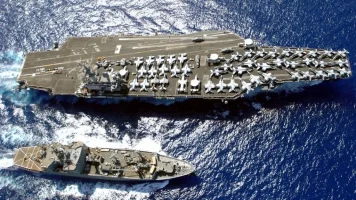- Views: 2K
- Replies: 4

The Indian Navy is set to acquire 10 units of the indigenously developed Tapas Medium Altitude Long Endurance (MALE) Unmanned Aerial Vehicle (UAV) for maritime surveillance operations, a significant step towards bolstering India's defence capabilities.
This procurement, confirmed by a high-ranking naval official, highlights the Navy's commitment to leveraging domestically developed technology for critical missions.
The Tapas UAVs will be stationed at the strategic naval base in the Andaman and Nicobar Islands, a crucial location for securing key maritime lanes in the Indian Ocean.
Developed by the Defence Research and Development Organisation (DRDO), the Tapas has been undergoing rigorous testing to meet the stringent requirements of the armed forces, including achieving a service ceiling of 30,000 feet and reducing drag and weight for enhanced endurance and efficiency.
While the Tapas UAV is being refined for production, the Navy has adopted a pragmatic approach by procuring two Drishti-10 UAVs as an interim solution.
The Drishti-10, a collaboration between Adani Defence and Israeli firm Elbit Systems based on the Hermes 900 Starliner, will serve as a stopgap measure to complement the 15 MQ-9 Sea Guardian UAVs already ordered from the United States.
This interim solution provides the Navy with immediate surveillance capabilities and enhances operational flexibility while awaiting the indigenous Tapas to become fully operational.
The Tapas MALE UAV project has faced some challenges, particularly in meeting the operational altitude and endurance criteria set by the Army and Navy.
The DRDO is actively working on design modifications to address these issues, focusing on reducing drag and weight to achieve the desired performance metrics.
These refinements are crucial to ensure the Tapas can operate effectively in diverse environments, from mountainous borders to expansive maritime regions.
This two-pronged approach of procuring both the indigenous Tapas and the interim Drishti-10 UAVs demonstrates the Navy's commitment to both self-reliance in defence technology and maintaining operational readiness.





